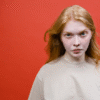The claim that beauty is in the eye of the beholder is an expression of philosophical relativism. It confuses and conflates goodness, truth and beauty with preference, prejudice and opinion.
Preference has a kinship with prejudice and is often kindled by it. It can distort our ability to see beauty. Many young people prefer rock and rap to Rachmaninov’s Rhapsody on a Theme of Paganini but such preference says nothing about the objective merits of these forms of “music”. The attraction to rock or rap might have more to do with the rhythm-driven message of the less than lyrical “lyrics”. The ugliness and brutality of the form reflects the ugliness and brutality of the message. This should remind us that there is no direct connection between attraction and beauty. We are all attracted to certain sins and there’s nothing uglier than sin.
By way of contrast, we do like the music of Rachmaninov because of its beauty, which is inseparable from our sense that it is also good and true. It violates our sense of reality to say that Rachmaninov’s Rhapsody is ugly or bad; it is clearly neither, whether we prefer it to other forms of music or not. There is something about what it is that transcends our opinions and prejudices.
This transcendent presence of beauty is apparent to an even greater degree in the primal art of Creation. When we see a sunrise, or leaves washed with sunlight, we know that we are experiencing something beautiful that reflects something that is also good and true. And such knowledge also transcends our preferences, prejudices and opinions.
It is necessary nonetheless to consider our own preferences if we are to understand our personal relationship with beauty. Why do we prefer one type of beauty over another? Does my preference for the beauty of one thing over another indicate that it is better than the other, or that it is more beautiful than the other? Does my subjective preference have any objective validity?
Understanding this difference between objective and subjective judgment is crucial to our understanding of beauty and indeed reality. As long as we know the difference, we will avoid unnecessary confusion and conflict. It is the difference between “the best” and “my favourite”. If we are arguing that something is “the best”, we need to employ objective reasons for the judgment; if we are merely saying that something is “my favourite”, we are at liberty to indulge our own personal preferences and predilections. If we are arguing that something is “good” or “bad” in terms of morality, we also need to employ objective arguments. Does a work edify? Does it lead one towards the good, true and beautiful, or does it fail to do so or, worse, does it corrupt the one who engages with it? The problem is that this might vary depending upon the moral perceptivity and receptivity of the reader. To take an example, the Decadent novels of J. K. Huysmans might help people in the gutter to turn their face upwards towards the stars but it might poison the minds of those who have never experienced the gutter. Discernment is necessary, therefore, in choosing which books we read and which books we recommend that others read. The same is true of the music to which we choose to listen or the visual arts we choose to study.
If we are to know the difference between the objective presence of beauty and our subjective apprehension of it, we need to be able to identify objective beauty when we see it. We need to learn to “read” reality. This requires the prerequisite presence of humility, gratitude and wonder, all of which are necessary to contemplative discernment and the dilation into the presence of objective reality which is its fruit.
We need to understand the beautiful as being inseparable from, and in some sense synonymous with, the good and the true. The transcendentals are essentially triune. If something is not good nor true, it’s not beautiful either. Ugliness is the absence of the good and the true. It can be present in beautiful art but only if it is shown to be ugly. The depiction of the ugly as being beautiful is the destruction of beauty itself, as it is the destruction of goodness and truth.
We also need to understand that the truth of beauty makes it inseparable from reason. If we will see beauty, we must learn to dive deeper than the shallows of materialism. We must penetrate beyond the physical surface of reality to its metaphysical depths. We must learn to look for goodness, truth and beauty in life in the same way that Thomas Aquinas teaches us to see their presence in Scripture. St. Thomas shows us that we must read Scripture literarily, in addition to literally, so that we can perceive its allegorical depths. If we wish to see beauty, we must cease to see it only literally and begin to see it literarily. We must understand the language of signs, the secrets of significance, the allegorical mode in which beauty is found most profusely and profoundly.
The more that we learn the language that beauty speaks, which is ultimately the language of the Logos, the more will our subjective preferences converge into the objective presence of goodness, truth and beauty Himself.
—
This article is republished courtesy of the Imaginative Conservative.
Image credit: Flickr-Jonathan Linczak, CC BY-NC-SA 2.0.
2 comments















2 Comments
Jon R, Parsons
October 29, 2022, 2:28 pmWe may find ourselves at a point where we should begin to acknowledge the role of millennia of white culture in the creation of a refined, elegant, aesthetic such that beauty and elevated thinking permit us to escape for a moment the government sponsored gutter world where the lowest common denominator of violence and ignorance are the hoped-for result. Like Guidobaldo (who sent no runners to and fro that he might learn the shepherd’s’ will) we need to be less intrigued by gutter snipes and their destructive lifestyle.
REPLYalanluiz2020
October 31, 2022, 6:56 amgood https://google.com/
REPLY